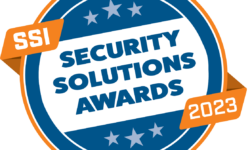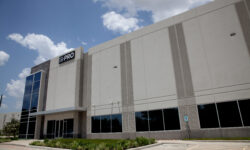How to Open the RMR Floodgates With Environmental Monitoring
Monitoring climate and potentially damaging elements like water and gas represents a high need, growing and potentially lucrative path for security dealers and integrators to boost their install and RMR stream.

The truth is, there are myriad ways to be successful. You can have smart employees, superb customer service, glowing reviews — but none of that matters if you don’t evolve and keep up with your competitors. Security pros are facing more competition than ever before.
These days, it’s not just other security integrators you need to worry about; it’s also custom electronic integrators, cable providers and Internet retailers.
It’s time to branch out and offer more than just security. You may have heard about or tried dabbling in A/V, the smart home or even cybersecurity, but there is another area that is quickly becoming in-demand: environmental monitoring.
The COVID-19 pandemic has completely altered the way we live our day-to-day lives. With personal hygiene now top of mind for everyone, air quality has quickly become a hot topic. But that’s just the tip of the iceberg.
Ahead, experts discuss the latest trends, opportunities and challenges in offering detection for water leaks, temperature, gases and more.
Meeting End-User Desires
Wellness and the effort of improving quality of life have been two of the biggest consumer trends to take off in recent years. People are investing in ways to sleep better, change room temperature remotely and monitor air quality. This opens the door for security integrators to be a one-stop shop for their customers’ security, home automation and wellness needs.
The increased interest in interactivity in the home is also paving the way for integrators to offer helpful solutions. The latest sensor devices allow users to monitor every aspect of the home.
Temperature can be adjusted, lights can be turned on or off, and water leaks, smoke and carbon monoxide (CO) constantly monitored. This is ideal for customers that want to not only monitor their own home, but perhaps a secondary property, or an elderly relative aging in place. These life-safety devices can then be tied together with a security system via a mobile app.
“I’m always looking not only to integrate devices in our security system and in our hub, but also what are some new technologies that are emerging that I can integrate with our interactive platform and make available through our app and to our partners. Air quality is definitely one of those devices,” explains Alula Vice President of Product Marketing David Mayne. “These investments are being made because of the growing awareness of health effects related to radon gas, invisible gasses, black mold and those types of things that can exist in your walls, in your house … so all of these become reasons for people to spend money on this technology.”
Not only should consumers be interested in these solutions for safety reasons, but these devices can also increase the value of their home. Many house listings now have technology, energy and air quality scores that are touted by realtors looking to maximize a home’s sale price.
There’s also discount incentives for environmental monitoring technology from insurance companies. These agencies would much rather provide a discount than have to pay out money due to water damage, which can be extremely costly. You may already offer your customers a certificate along with their security system to present to their insurance company, why not do the same for leak and freeze detectors?
Commercial customers can also benefit greatly from these types of monitoring solutions — whether industrial factories ensuring its workers aren’t inhaling too many fumes or something as simple as making sure an office’s temperature is comfortable for employees.
Schools also have a lot to gain from environmental monitoring. Aside from your standard smoke and CO detection, you can offer cutting-edge technology such as gunshot, aggression or vape detection.
Although many schools around the country are empty in favor of virtual classrooms, the buildings still need to be monitored. Integrators can implement an automated system that ties leak detection, intrusion sensors and fire alarms together with video surveillance, allowing the appropriate staff to keep an eye on the property without having to be there.
The incoming COVID-19 vaccine also presents an environmental monitoring opportunity for integrators. The Pfizer and Moderna vaccines need to be kept extremely cold to avoid degradation. Inovonics Senior Product Manager Scott Fincher says though this falls outside the scope of a typical intrusion system, it’s a necessity that needs to be fulfilled, so why not by security integrators?
“An integrator might have some customers that maybe they’ve got a big warehouse or something like that, and it’s one thing if the healthcare professional is administering the vaccine, but if it’s a large number of employees, there’s got to be some consideration given on the part of the employer on ensuring that those vaccines are properly stored,” Fincher explains. “From a healthcare perspective, the CDC has pretty rigid guidelines about how things need to be kept and how things need to be monitored to make sure they can still be effectively distributed.”
Fincher adds that while it is not something the CDC or an AHJ is going to check necessarily, it’s definitely something that a school, university, an Amazon warehouse or anyone with a large number of employees that might be deemed critical is going to need to take into consideration.

A smartly placed solution like Alula’s Flood & Temp sensor can help save customers save money by preventing costly damage.
Open the RMR Floodgates
While there are plenty of environmental monitoring opportunities, they admittedly aren’t without their challenges. The first hurdle integrators must overcome is expanding outside traditional intrusion systems.
It’s time to move beyond motion and contact sensors, access control, and video surveillance. The need is out there, so why not take advantage of it? Once you begin to offer these solutions, make sure to then educate your customers on the benefits of them.
“Fifty thousand people a year in general are hospitalized because of CO exposure and hundreds of people die. If that’s not part of their ongoing intrusion bidding practice, it really should be,” says Fincher. “Similarly, water damage amounts to tens of thousands of dollars a year in damage. But it can be easy to avoid because it’s usually from two things. One, a pipe breaks and that’s usually because of temperature freeze, or two, something fails and it slowly turns into a big problem. There are devices we make and that other entities make that can integrate seamlessly into an intrusion panel. It’s just being aware of these things and saying, ‘Hey, did you think about X, and what are you going to do about it if such and such a thing occurs?’”
Your customers aren’t the only ones that will benefit from these solutions — you will as well. Environmental monitoring can help drive RMR by increasing interest in add-ons, as well as help reduce attrition.
“Adding this technology, adding these capabilities, bringing more services to your customers, there’s a stickiness factor and that’s been proven out in study after study. The more technology and integration you’re able to bring your customers the more you’re able to get them to use it, the less likely they are to attrit,” Mayne says. “You can ask any dealer out there, one of the key measurements is are people using the system? If they’re using it, they’re going to keep paying. If they stop using it, they’re a risk. These types of technologies help close that gap and make sure that recurring revenue can remain continual.”
Mayne adds that once customers get interested in temperature monitoring, they often want some form of automation such as thermostat controls. Automation features like these generally come at an increased fee.
“It could be small appliance controls, it could be turning a sump pump on or off. These are things that you can now tie into the system. Even opening or closing a water main, there’s devices that can do that.”
Fortunately, many of today’s environmental monitoring solutions are integration-friendly. They also tend to be wireless, so you don’t need to worry about running wires during retrofits or difficult locations.
Though 2020 may have been rough, it has made people more interested in environmental monitoring, wellness and general life safety, all areas you should be focusing on expanding your integration business.
If you enjoyed this article and want to receive more valuable industry content like this, click here to sign up for our FREE digital newsletters!

Security Is Our Business, Too
For professionals who recommend, buy and install all types of electronic security equipment, a free subscription to Commercial Integrator + Security Sales & Integration is like having a consultant on call. You’ll find an ideal balance of technology and business coverage, with installation tips and techniques for products and updates on how to add to your bottom line.
A FREE subscription to the top resource for security and integration industry will prove to be invaluable.








